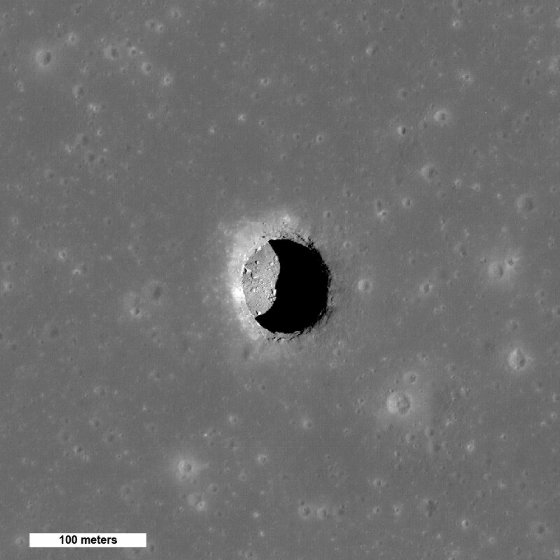'Moon lava tube' may be the best spot to build a lunar base

In recent years, there have been discussions about
Thermal and Illumination Environments of Lunar Pits and Caves: Models and Observations From the Diviner Lunar Radiometer Experiment - Horvath - 2022 - Geophysical Research Letters - Wiley Online Library
https://doi.org/10.1029/2022GL099710
UCLA scientists discover places on the moon where it's always 'sweater weather' | UCLA
https://newsroom.ucla.edu/releases/places-on-moon-where-its-always-sweater-weather
Strange Moon Pits Could Have Temperatures Comfortable Enough For Humans to Live In
https://www.sciencealert.com/scientists-identify-parts-of-the-moon-that-could-have-mild-steady-temperatures
On the Moon, there are about 29.5 days on Earth from when the sun rises to when it sets, so the day and night are very long. The environment is harsh, with surface temperatures reaching 127 degrees Celsius during the day when the sun hits it, and dropping to -173 degrees Celsius at night. , is an unavoidable engineering challenge for long-term lunar surface research projects.
Meanwhile, lunar lava tubes, which are thought to have been formed during the period when there was volcanic activity on the moon, are attracting attention as candidate sites for the construction of a lunar base. A lava tube is formed when the surface of the lava flow that flows above the ground cools and becomes a lid, and as the flow of lava decreases, the interior becomes hollow, eventually leaving an underground cavern.
In 2008, observation data from Japan's lunar explorer Kaguya discovered a vertical hole that was thought to have been the collapsed skylight of a lava tube. It is said that it is. Tyler Horvath, a Ph.D. student in planetary science at the University of California, Los Angeles, said 16 of these shafts are likely collapsed lava tubes, which appear to be connected to caverns on the inside. increase.
The following is one of the vertical holes that is considered to be the moon's lava cave. It is believed to be 60 to 70 meters wide and about 100 meters deep.

by
These lunar lava tubes may provide protection from extreme temperature changes and cosmic radiation on the moon's surface, and are thought to be potential sites for lunar bases . Therefore, Horvath et al.'s research team analyzed the data of the Diviner Lunar Radiometer Experiment (DLRE) , a surface thermal radiation measuring instrument installed on NASA's lunar unmanned satellite Lunar Reconnaissance Orbiter (LRO) , and analyzed the data of the moon. We investigated how different the temperature changes in lava tubes are from bare lunar surfaces.
The research team used computer models to analyze the thermal properties of rocks and lunar Chile in a soccer-field-sized pit in the Sea of Tranquility near the lunar equator, charting temperature changes over time. As a result, it was found that the daytime temperature reached 149 degrees Celsius in the part of the pit exposed to sunlight, which is more than 20 degrees higher than the surrounding lunar surface. ``Since the Sea of Tranquility Pit is close to the moon's equator, the floor, which is lit at midday, is probably the hottest spot on the entire moon,'' Horvath said.
On the other hand, the shaded area of the pit has less temperature difference during the day than the bare lunar surface, and it was found that the temperature remained at 17 degrees Celsius during the day, which is very comfortable. Also, due to the limited heat radiation inside the shaft, the temperature at night is about 100 degrees Celsius warmer than the bare lunar surface, so even at midnight it may be above freezing.
If the shaft is a lava tube, and there is more underground space than you can see from above, then you will have a wider range of comfort. In addition, the walls of vertical holes and caves are expected to provide protection from cosmic radiation and micrometeorites, and can be candidates for providing a comfortable space for astronauts and observation equipment.
``Humans evolved living in caves, but they may return to cave life once they move to the moon,'' said David Paige, a professor of planetary science at the University of California, Los Angeles. .

Related Posts:
in Science, Posted by log1h_ik







